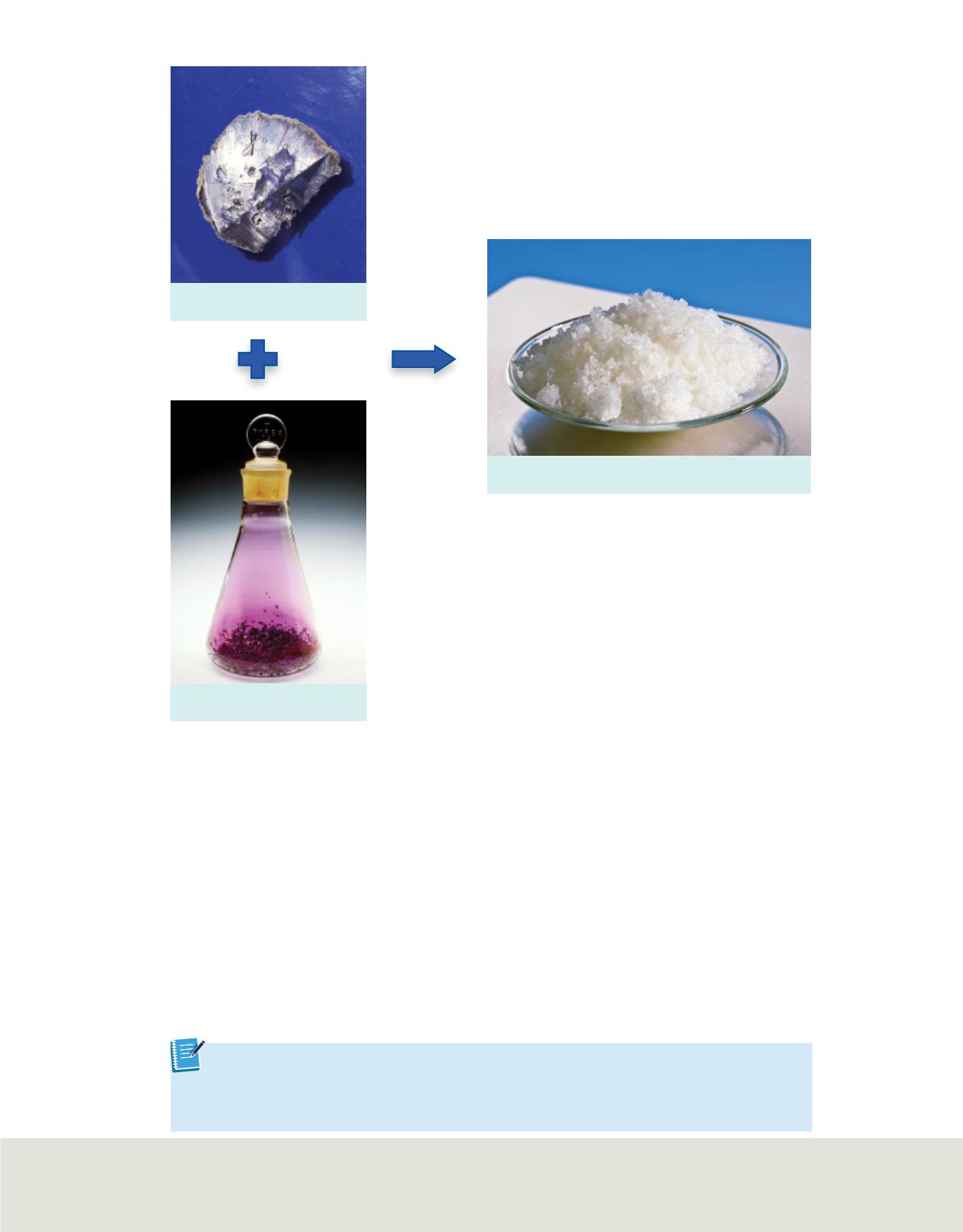

Properties of compounds
The properties of a compound are different from those of
its component elements. The example of water in
Figure 15
illustrates this fact. Water is
a stable compound that is liquid at room temperature. When water is broken down, its
components, hydrogen and oxygen, are dramatically different than the liquid they form
when combined. Oxygen and hydrogen are colorless, odorless gases that undergo
vigorous chemical reactions with many elements. This difference in properties is a
result of a chemical reaction between the elements.
Figure 16
shows the component elements—potassium and iodine—of the compound
called potassium iodide. Note how different the properties of potassium iodide are from
its component elements. Potassium is a light silvery metal that reacts with water. Iodine
is a black solid that changes into a purple gas at room temperature. Potassium iodide is
a white salt.
Potassium
Potassium Iodide
Iodine
Figure 16
When potassium and iodine react, they
form potassium iodide, a compound with different
properties.
Get It?
Summarize
how the properties of a compound and the properties of its
component elements compare.
Lesson 3 • Elements and Compounds
63
(t)Andrew Lambert Photography/Science Source, (b)Charles D. Winters/Science Source, (r)Martyn F. Chillmaid/Science Source









